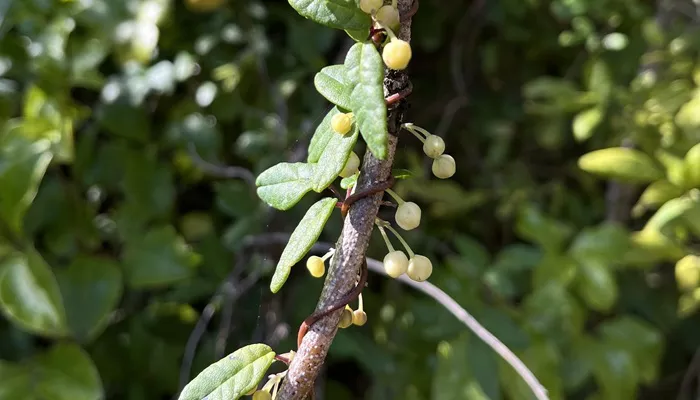Last year, environmental writer Benji Jones highlighted a plant so extraordinary that it has sparked debate about whether plants possess a form of consciousness.
Plant ecologist Ernesto Gianoli was walking through a rainforest in southern Chile when he made a surprising discovery. The leaves of a well-known shrub, the arrayán, were being mimicked by an entirely different plant, Boquila trifoliolata. Normally, B. trifoliolata has small leaves with three rounded lobes, but the ones Gianoli saw closely resembled those of the arrayán, as though the plant was camouflaging itself.
Curious, Gianoli explored more of the forest to see if this was just a coincidence. Astonishingly, about half of the other B. trifoliolata vines he found that day had leaves that looked like those of nearby plants — not just any plants, but the very species growing right next to them.
Further investigation revealed something even more remarkable: different branches of the same Boquila vine were capable of mimicking various plants in their surroundings. To date, this phenomenon appears to be unique to Boquila trifoliolata, but scientists remain puzzled as to how it happens. Did anyone ever think that a plant could mimic so many others without even touching them?
Why Do Boquila Plants Mimic Others?
The leading theory is that Boquila mimics other plants to protect itself from predators by blending in with less palatable species. However, the real mystery lies in how the plant accomplishes this. How can it imitate other plants without the ability to see them?
Wikipedia offers a range of possible explanations: “The exact mechanism by which mimicry occurs is not well understood but may involve chemical, odor, genetic, metagenomic, transcriptomic, proteomic, metabolomic, epigenetic, and/or microbial cues to identify and mimic the species it is attached to.” However, this list overlooks one of the more controversial ideas — that plants might actually be able to see.
Can Plants Really See?
This question has sparked a heated debate among scientists. Traditional botanists rely on experiments and hard evidence, while a smaller group of researchers believe that plants share certain traits with animals and even humans. For this group, Boquila trifoliolata lends support to the theory that plants might have a form of vision and possibly even a primitive brain-like structure to process visual information.
Though Benji Jones seems skeptical of the idea that plants can see, he admits that the Boquila vine challenges current knowledge about plant behavior. Some scientists have attempted to test the vision hypothesis, operating under the assumption that plants may have cells similar to simple eyes (ocelli) that use light not just for photosynthesis, but for interpreting the environment around them.
In one experiment, plant researcher Yamashita, along with his colleague Jacob White (an amateur plant enthusiast), grew Boquila next to plastic plants. If B. trifoliolata truly uses vision, they reasoned, it should be able to mimic the plastic plants as well. And according to their findings, it did. The study plainly states, “Leaves of B. trifoliolata mimicked leaves of the artificial plant.”
However, many plant biologists have criticized the study’s methods and dismissed the results. They argue that the idea of plant vision is too far-fetched to be taken seriously. Nevertheless, the research remains accessible to the public for further scrutiny.
The Complexity of Plant Behavior
Boquila trifoliolata’s mimicry is just one example of the astonishing behaviors plants can exhibit. From plants that trap insects to those that display sophisticated defense strategies, many plants show signs of complex behavior. Some scientists believe these behaviors hint at a kind of intelligence.
Interestingly, some researchers have even proposed that bacteria might possess cognitive abilities. As scientific understanding evolves, the debate about intelligence and consciousness in nature may increasingly shift from materialism versus theism to panpsychism versus theism.
An alternative viewpoint is that this intelligence is not within the plants themselves, but rather comes from an intelligent design behind nature. Proponents of this idea, like Stephen Meyer, have argued in works such as Darwin’s Doubt and Return of the God Hypothesis that nature’s complexity points to a higher intelligence. This, of course, remains a highly controversial stance.
Regardless of where one stands on the matter, the traditional Darwinian explanation — that natural selection and random mutation alone account for these behaviors — is becoming harder to defend. The mystery of Boquila trifoliolata’s mimicry is a vivid reminder that much about the natural world remains unknown.


